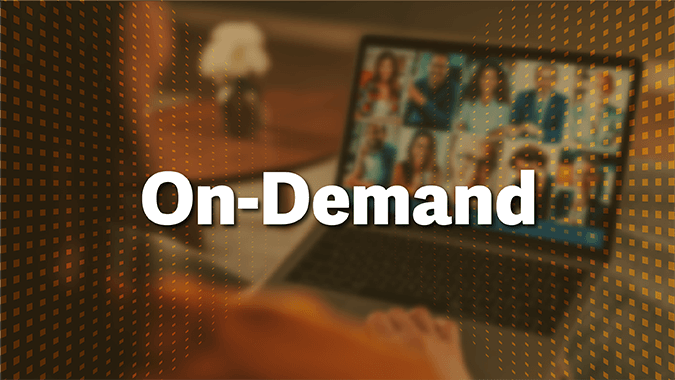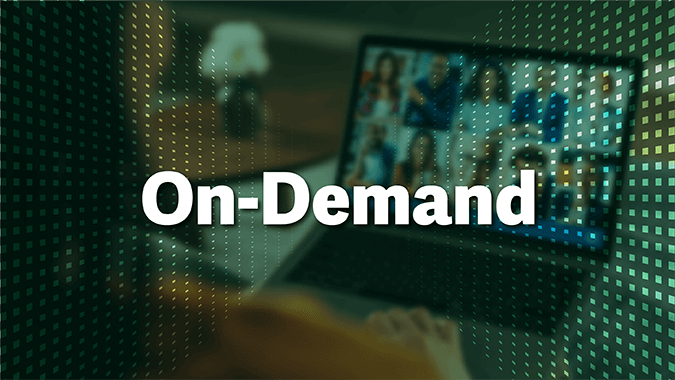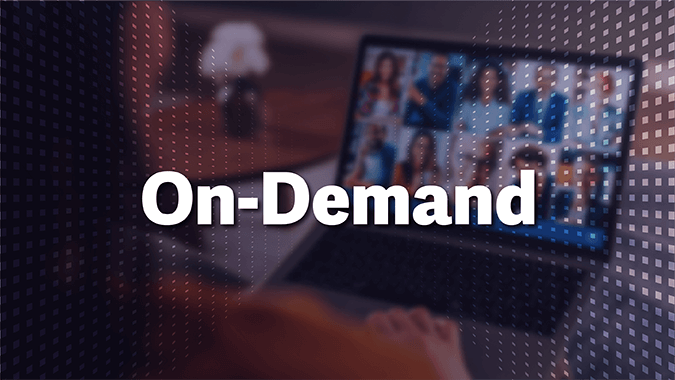
The Root of the term Network is Work: Best Practices for LinkedIn Users
- Published
- May 19, 2020
- Topics
- Share
One of the EisnerAmper Directors and personal branding expert Alyssa Gelbard share their tips for making new connections on LinkedIn, their pet peeves of those who do not follow LinkedIn etiquette, and best practices for applying to jobs on LinkedIn.
Transcript
EisnerAmper Team: Hello and welcome to the Friends of the Firm podcast. We hope to provide you with creative, effective solutions for finding the career opportunities or executive staffing solutions you're looking for. I'm your host and our special guest today is Alyssa Gelbard, founder and president of Point Road Group and personal branding and career expert. Today we will be discussing best practices for LinkedIn users and welcome back Alyssa.
Alyssa Gelbard: I'm excited to continue our conversation and talk about LinkedIn. One of my favorite topics.
NP: Now that we know how to construct our profile and what to put in it, how do we actually go and make useful connections from it to grow our personal and professional network?
AG: So I can't proceed in talking about connecting on LinkedIn without talking about you and me first because we connected because I initially reached out to you on LinkedIn a while back when I first learned of Friends of the Firm program. And now look at us. We've done great stuff together, good friends. It really, and this is all because of LinkedIn. So, I just had to say that.
So should you do to connect? So a bubble, I mean, if you take nothing else away from what I'm saying is personalize your invitations to connect. Everybody talks about this anytime people talk about LinkedIn yet, I mean, I don't know about you, Nkrumah, but I still get, the majority of connection requests I receive are not personalized. And you enable, they give you 300 characters in that little window, so you can't write a book there, but you can make it personal. And even if it's somebody know, it's a great way to start a conversation, whether you're talking about people in common, you're mentioning commonalities you have, you heard someone as a speaker, you read something that you write but don't sound phony. That's the other thing. Be genuine there. And you can do this by the way, this is one of those differences if you have premium version, you can do this in a message via InMail where you still want to personalize. But if you don't personalize, it's just sort of, you're missing the opportunity for conversation.
And LinkedIn is about networking, building relationships, creating conversation and if you just connect without that, you're missing an opportunity. In terms of some other best practices in terms of connecting is if you meet somebody, and when I say meet somebody, I don't mean it has to be in person, if you're having a phone call, if you're on a video chat together, follow up after when you're top of mind. Right now since you're master connector you know I really enjoy networking. I've met some great people when we're in this new normal through various online meetings, webinars, et cetera. And we've connected on LinkedIn and we've started to build the relationship. And you still can do now, but one of the things that you want to do when you're doing that is, especially when it's a new connection, is don't go in right for the ask. Aside from all the sales people who do that where it's incredibly frustrating, it's an invitation to connect and going in for a sales pitch, I don't really think that's the right way to conduct business, that's just my opinion. I believe in building relationships first. But you know, think about connecting first, laying the groundwork and then go in for an ask if you're looking to ask for something but not always and you may not be, you're just looking to build a relationship which is wonderful.
And when you think about just because someone sends you an invitation doesn't mean you have to accept it and know that when you send invitations, people may not accept them either. Sometimes, don't take it personally, they may miss it. Right now is an easy to, we're getting bombarded with communication so it's easy to miss. And so sometimes if it's somebody you really want to connect with, there's a way to withdraw the invitation, but then you have to wait a few weeks to send it again, or maybe shoot, if you know their email, shoot them an email, but not always personal when someone doesn't accept it.
NP: Well Alyssa, so many great points. So just very quickly working backwards with regard to when you send out that invitation for some people, and this has happened so many times where it doesn't, the invitation or LinkedIn is not connected to their work email. It's connected to their personal. And listen, you and I probably have multiple emails. I have a number of personal, my former work email right when I had my own company, but I don't check that email every day, right? So sometimes things get lost. So, to your point you really can't take it personally, I agree. And then moving to LinkedIn and just when you reach out to people cold or have that interaction after a really good call or meeting, authenticity is definitely paramount. I agree with you 100% and I'll just give a quick example of making connections on LinkedIn. Of course you and I met through LinkedIn, so this is a success story, which is awesome.
But in addition to that, I'll just talk about where we are today. So today is April 15th, 2020 and we're in the thick of the pandemic and people have been forced to work from home and everyone's connecting through Zoom and WebEx and FaceTime and all of that but nothing will ever replace the face to face human interaction. Now, among or amongst all of the negative press we're getting online, which really I think kind of therapeutic and refreshing is to see positive things on LinkedIn. Right? Like what can you say that's really going to brighten up someone's day?
So I work from that. And then one other example that I'll tell you how I connected with my connections on LinkedIn, but most recently I've been for the last four weeks with my wife and my son and my son's daycare was closed, he's not going back to school this year. And I'm like, "You know what? Everyone's posting these things on LinkedIn, I'm stressed out, I'm overwhelmed, so is everyone else, I'm going to post a photo of Nkrumah, not in a suit, with a big beard with a baseball cap hugging his son." Because I was with my son on the couch, I was answering emails and watching TV. I was like, "I'm going to post that picture."
I posted that photo, I've gotten 300 plus likes. I've gotten like 50 plus comments., The connectivity and the authenticity there again, I did it just because I was sick of the negative stuff and I wanted to put something out there positive, that was positive. And it's just amazing how it resonated with so many people cause they're in a similar situation.
NP: And I think to that point I think we normally say, "Hey, LinkedIn is a professional place. This is not the place to post personal," but we're in this weird time and what you were doing was also saying, "Hey, I'm the person. For those of you who know me, you know me as the guy in the sharp suit and you know all this stuff and now this is me. I'm still that same person, but this is me not in that suit because I'm home." And that kind of showed a nice personal side, which I really like.
AG:One thing that I also wanted to say kind of before to your point, because it's honestly a pet peeve of mine when people say about email and it goes to an email that I don't check. So another kind of piece of advice to everybody is going into your account and see what email it's linked to because it may be an email that you used a million years ago, dare I say back in like the Yahoo and AOL days or maybe you created it through a work email from awhile back, exactly to your point too, and you don't remember that you did that. And if you're not active on LinkedIn then you may not see that. You may not see the messages and you know those little message indicators at the top aren't the most reliable. So hey, go into your profile and make sure you have an email that you check regularly.
Okay. Now I can sleep at night that I said that.
NP: No, that's a really good point. That's a really good point. And the other piece, before we go to the next question is I guess talking about pet peeves, one of my biggest pet peeves is the person that authentically connects with you and then they want to connect personally or professionally, and then once I accept that connection, they basically unleash, unload on me. At the point where it's just so much information. Yes, I work at EisnerAmper. Yes, I work at an accounting firm, but I don't need lead generation and all these services. You've misspelled my name, you called me Pierre, you've misspelled that. At the end of the day, we have no real connection. At that point, what I do, and a lot of people have disagreed with me on this, I actually disconnect that person. I no longer am connected that person on LinkedIn. I might've made a mistake by accepting them and listen, that's okay too. You don't have to stay connected to all of your connections.
AG: Correct. And you ran on the biggest pet peeve on that because the bait and switch I call it.
NP: Yes.
AG:"Oh, we're going to be best friends," and "Oh, you just want to sell me something."
NP: Yep, exactly. LinkedIn overall has blown up as a job searching platform and one of the biggest complaints that I hear from hiring managers is that they're inundated with applications and most of them get candidates who are not relevant for the job that they are looking to hire for. What are some of the best practices, briefly, I'm using LinkedIn to find a job" What do you recommend?
AG:So there's a difference I think between throwing your hat in the ring for something that might be stretch versus doing so when you don't have the required experience or skills. It's so frustrating to employers because why would I even consider you if I can see clearly, because I'm looking at your LinkedIn profile, that you don't have the key things we need versus like the nice to have. You really struck a chord because we've been going through this right now with two positions that we're hiring for, which is like a career and personal branding consultant and a digital marketing intern and some of the people that are applying like, "Are you serious?" One of my colleagues is going through these is like you said, use the word inundated and it's how much time is wasted because they're not they're not relevant for the role.
So best practices are obviously, it's different again, a stretch versus if you're just so not the right person, be realistic. Update your career interests under the jobs tab. Let recruiters know that you're open. And this is a kicker, follow companies you're interested in. Because first of all, recruit people who have recruiting version, they can search on who's following them, but then also their information, what they're putting out on LinkedIn is going to appear in your feed too so it makes it very easy. You can reach out to job posters, but here's the thing, don't automatically send connection bites to people at companies where you're applying to jobs before you're interviewing, they may not want to connect with you. When people send me invites because they've just thrown their hat in the ring for a job, that's not necessarily your reason to connect. It might be, but there's a difference between just blindly reaching out to people again without not even using a personalized connection request, but reaching out to the recruiters and people who are posting jobs is a great idea.
And also leverage your network to see who is currently working or has worked at the company that you're looking for. LinkedIn provides an amazing, amazing tool for to do that so it's astounding to me how many people do not really do that, where they do it. At very at the surface level, "Oh, I don't have a first degree at that company. Forget it." Look through all those second degree connections because there might be somebody there who you have in common who would be perfect to help you get an in or get intel.
NP: Right, and Alyssa, you made a great point. What I've seen is yes, we might not have that first level connection at said company I'm looking to interview with, okay, that's fine, but do your due diligence. You said "Click on the person who's posting the job, whether it be a recruiter or HR director." Great. Click on their profile. Don't connect. See who they're connected to, where you have mutual connections of your mutual connections, maybe if you have a really good connection or your brother-in-law or your friend or whomever, at the end of the day, just ask if they can make an introduction for you. And if that person can make an introduction for you, at that point, it actually might be appropriate for you to connect directly with that person after the introduction is made. So, you can utilize LinkedIn to help you but what I tell people, the root word of network is work and you have to do the work. So many people try to take the shortcut and they take this attitude like they are entitled to get a job or entitled to get that connection or introduction. Nothing is given out for free. You have to do the work.
AG:Right. And the back end of that, which is you're doing all this stuff, but if your profile doesn't position you well, then what good was that? You just wasted an amazing opportunity because your profile isn't positioning you well. So, you had a valuable connection and you're losing it because, and that's for job, and that can also be for just business opportunities or board opportunities.
NP: Yes. Yes, absolutely. But I want to say this was amazing, Alyssa. Thank you again for joining us. Your expertise in this topic is second to none, and I'm sure it will make a world of difference to some of our listeners, to most of our listeners, quite frankly. Just want to say thank you and it was great having you.
AG:Oh, it was my pleasure Nkrumah and thank you to you and EisnerAmper for having me. And for those listening, feel free to reach out to me on LinkedIn, but send a personalized connection request.
NP: Absolutely. Thank you for listening to the Friends of the Firm podcast, part of the EisnerAmper podcast series. Visit eisneramper.com for more information on this and a host of other topics and join us for our next EisnerAmper podcast when we get down to business. Thank you.
Also Available On
Contact EisnerAmper
If you have any questions, we'd like to hear from you.
Receive the latest business insights, analysis, and perspectives from EisnerAmper professionals.




